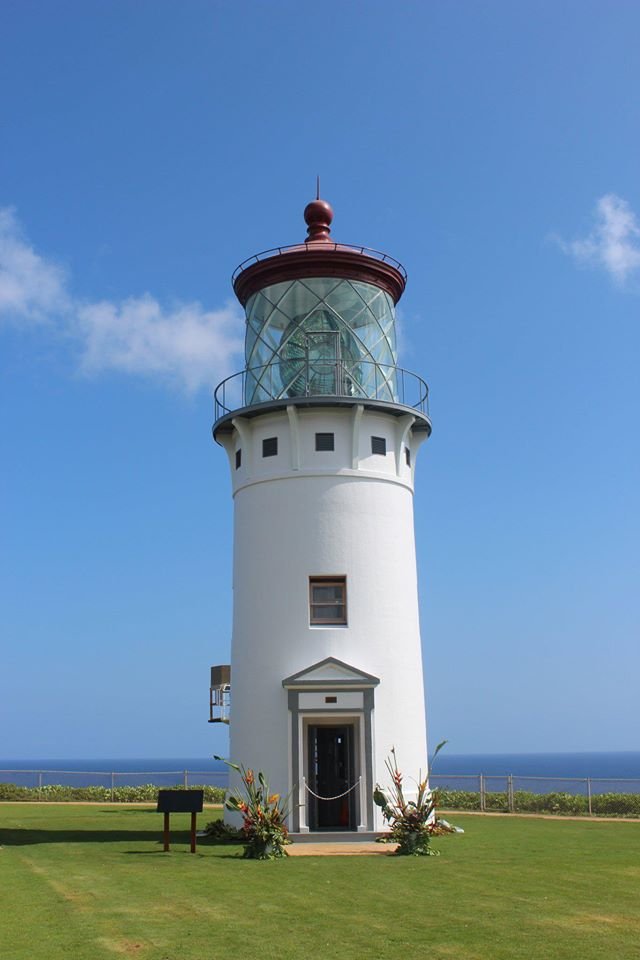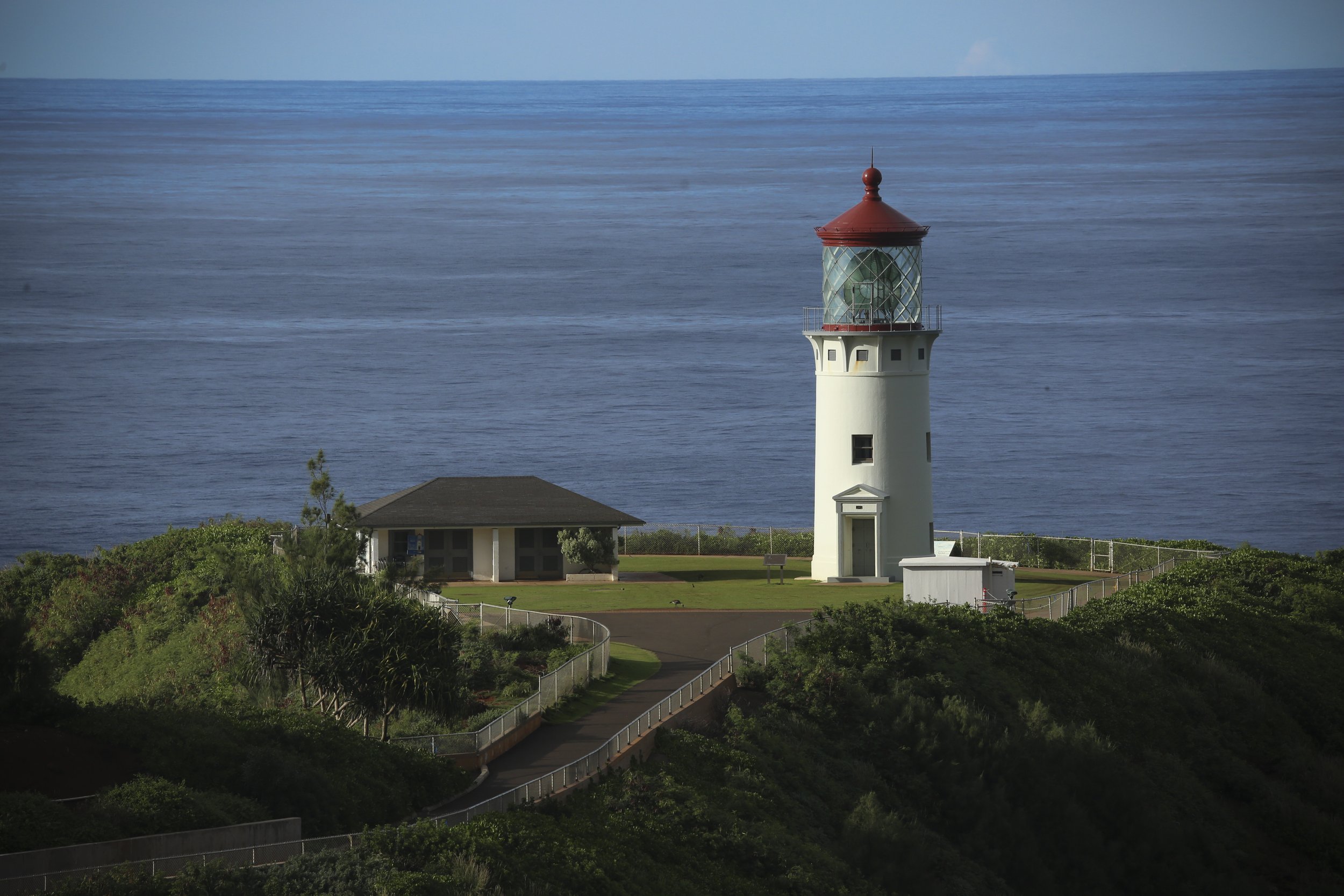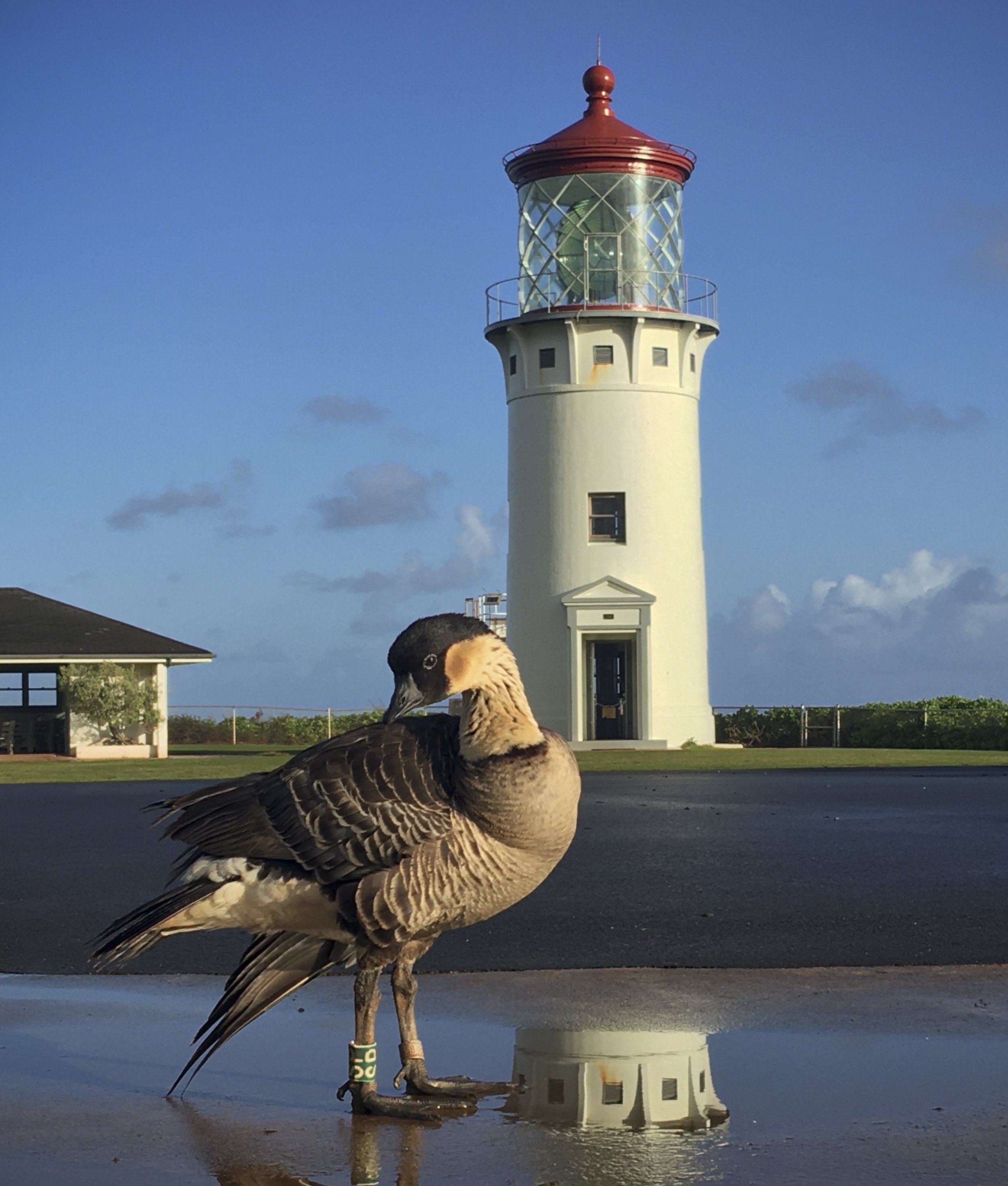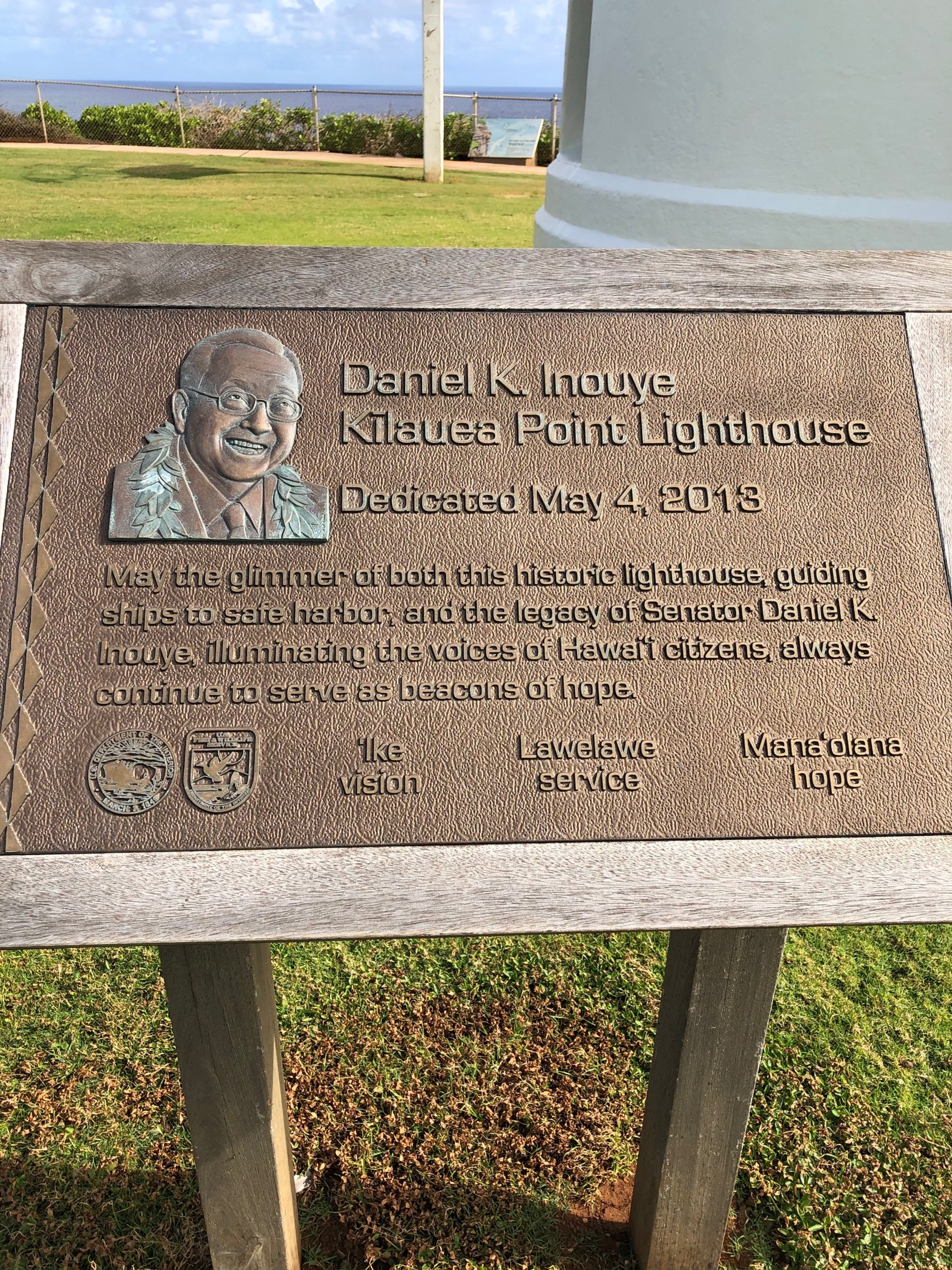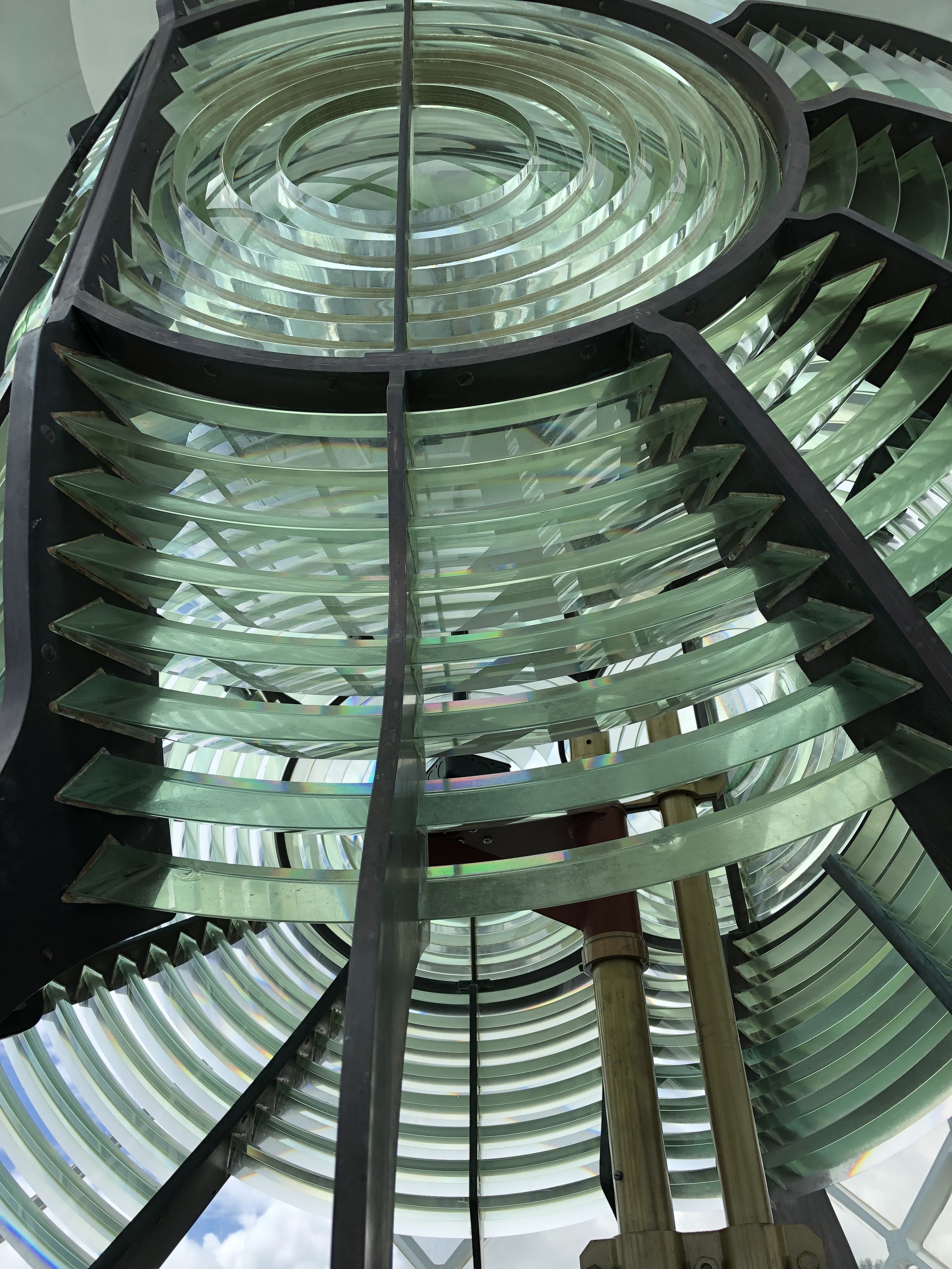Daniel K. Inouye Kīlauea Point Lighthouse
Known today as the Daniel K. Inouye Kīlauea Point Lighthouse, this impressive 52 foot structure is situated on a rocky peninsula 180 feet above the Pacific Ocean. Built in the historic era of lighthouses in the U.S., it was commissioned as the Kīlauea Point Light Station on May 1, 1913. One hundred years later, on May 1, 2013, it was dedicated to U.S. Senator Inouye who was instrumental in raising the private and public funds necessary for the restoration of the lighthouse.
The three year restoration was completed just prior to the Centennial Celebration. After years of exposure to harsh winds, salty sea air, intense sun, and high humidity, the structure was in serious disrepair. Rust stains streaked down the sides of the tower. Metal railings and fixtures were disintegrating into rust.
Today, the gleaming white tower has been restored to its original condition. Metal work has been replaced or sandblasted to recondition it to its original state. The roof and vent ball, once faded and dull, are now a rich red crown to the tower.
The restoration, however, did not make the light operational. The 8,000 pound lens structure was originally designed to float on 260 pounds of mercury, allowing the lens to rotate with a simple weight-driven clock. Due to the now-known dangers of mercury, this mechanism could not be restored. The lamp itself is lit for ceremonial occasions, but the lens does not rotate.
The crowning jewel of the lighthouse is the Fresnel lens, a complex array of lens and prisms which focused the light into a powerful beam, reaching 22 miles at sea. The original light source was a kerosene lantern providing 250,000 candlepower, eventually replaced by a quartz iodine lamp putting out 2,500,000 candlepower.
